Sunday, February 24, 2002
Today is our tour of the Sacred Valley. We hope it's as good as the City Tour we went on yesterday. Norka picked us up at 8:15 sharp in a taxi and transported us to the bus, just like she said she would. Sonia was on board the bus waiting for us, saving us seats right up front. They take good care of us.
As we descended into El Valle Sagrado, we could see why people would think it's sacred. The scenery is dramatic and gorgeous. We stopped at Mirador Taray for photos and bought some little trinkets from a young girl. There are many varieties of cactus in the valley, which seems strange as wet as it is. We saw massive mutant agave plants the size of Volkswagens. They should manufacture tequila here.
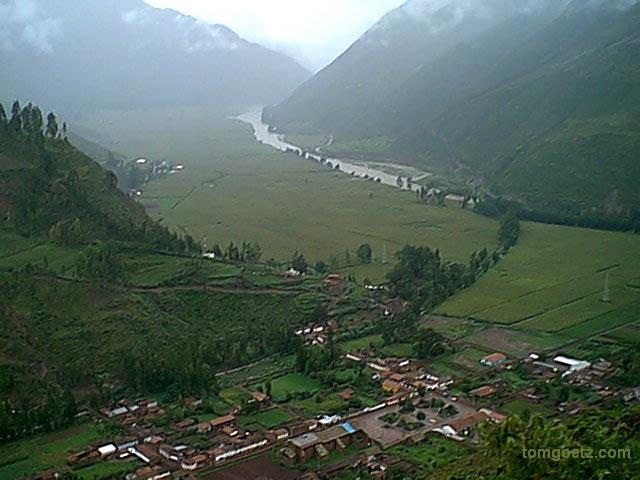
El Valle Sagrado
Next we stopped at the Pisaq Mercado. The market features hundreds of canopied stands selling jewelry, ceramics, blankets, and other tourist goodies. One end of the market caters mostly to villagers, who come dressed in traditional garb to exchange potatoes, fruit, etcetera. The villager end of the market is of course the most interesting, and it was there that we purchased three little whistle-type instruments from a cute little girl. It made her day, and our souvenir buying was complete.
Up the road from Pisaq are ruins constituting the largest standing Inka fortress at Parque Arqueologico de Pisaq. We drove up the hill as far as we could, and when a landslide blocked the road, we continued on foot. It was muddy and sprinkling and very steep, but we made it.
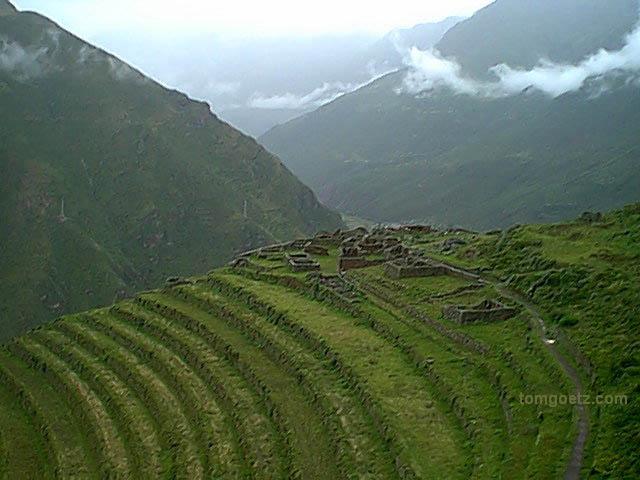
Unas Ruinas al lado de Pisaq
The stone work of these ruins was quite impressive, but I can't help but think that we missed out on some of the history. Bernabe, our guide, would talk to the Spanish speakers for 15 minutes at at time, then he would turn to us and give us a three-minute explanation. There were many muddy little children here all dressed up and posing with puppies and baby alpacas. They wanted us to give them money to take their photos. But we already had the obligatory alpaca/child photo, so we skipped it.
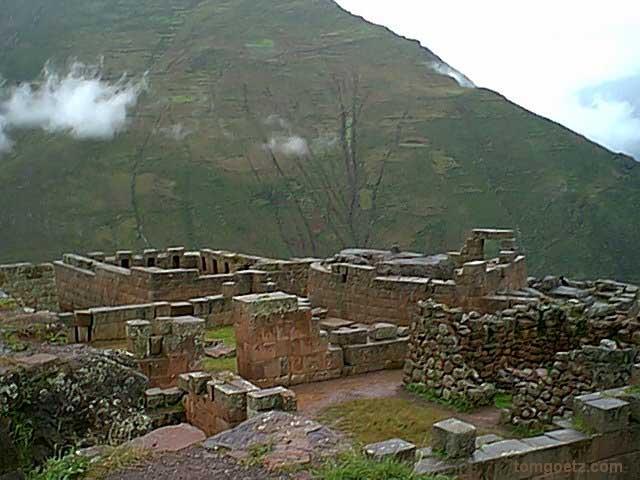
Las Ruinas de Pisaq
After lunch at Urubamba, we headed toward Ollantaytambo. This archeological complex was a gigantic administrative, social, religious, and military center for the Inkas. We climbed its colossal stone walls and found fabulous valley vistas. It was very cool, and we took thousands of pics (approximately). The rock quarry that was used in the construction of the massive fortress lies 12 miles across the valley on top of a huge mountain. We were here a little over an hour. We wished we'd had more time. The village of Ollantaytambo is itself quite interesting. It is the best surviving example of an Inka town in appearance and is built on Inka foundations.
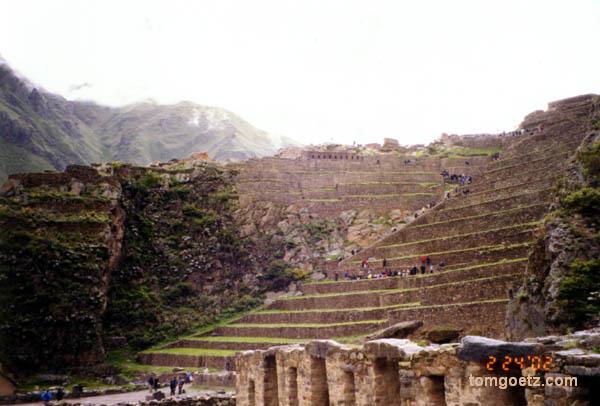
Ollantaytambo
The tour last took us to Chinchero, mythical birthplace of the rainbow. Bernabe said we had only 40 minutes to visit the museum, the market, and the church. It turned out to be too much time. Chinchero chin-sucked. Here we encountered the worst postcard hucksters yet. Everywhere in Peru and Bolivia children had followed us around trying to sell us postcards. At this point we probably had more postcards than they did, but they wouldn't take no for an answer. The little capitalists at Chinchero were offering us a "very special price" of two soles each. They must have thought we'd just fallen off the turnip truck, because everywhere else we went the price was one sol each.
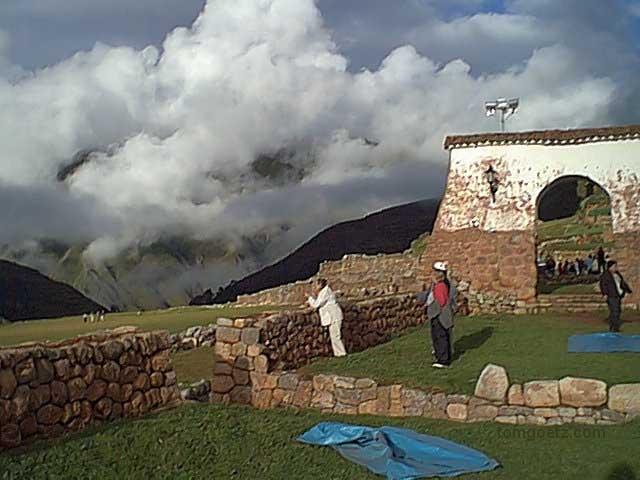
Chinchero
We drove another hour back to Cusco, and the bus dropped us near our hotel. The tour lasted from 8:30 a.m. to 7:00 p.m. and cost nine bucks each. It was a great day. Nine bucks well spent. We ate dinner at Subway. North American sandwiches rule.
Tom wasn't feeling very well today. He did okay, but was seeming more and more miserable. He had caught a cold either bike day or the next day when we hiked up the mountain in the rain. He decided at 10:30 p.m. that he needed to start on some antibiotics, so we had a little mini-adventure of going to the pharmacy on the Avenida del Sol. I guess it wasn't really all that exciting, but finding an all-night pharmacy in a foreign country where you don't speak the language isn't exactly as easy as driving to the Walgreen's down the street either.